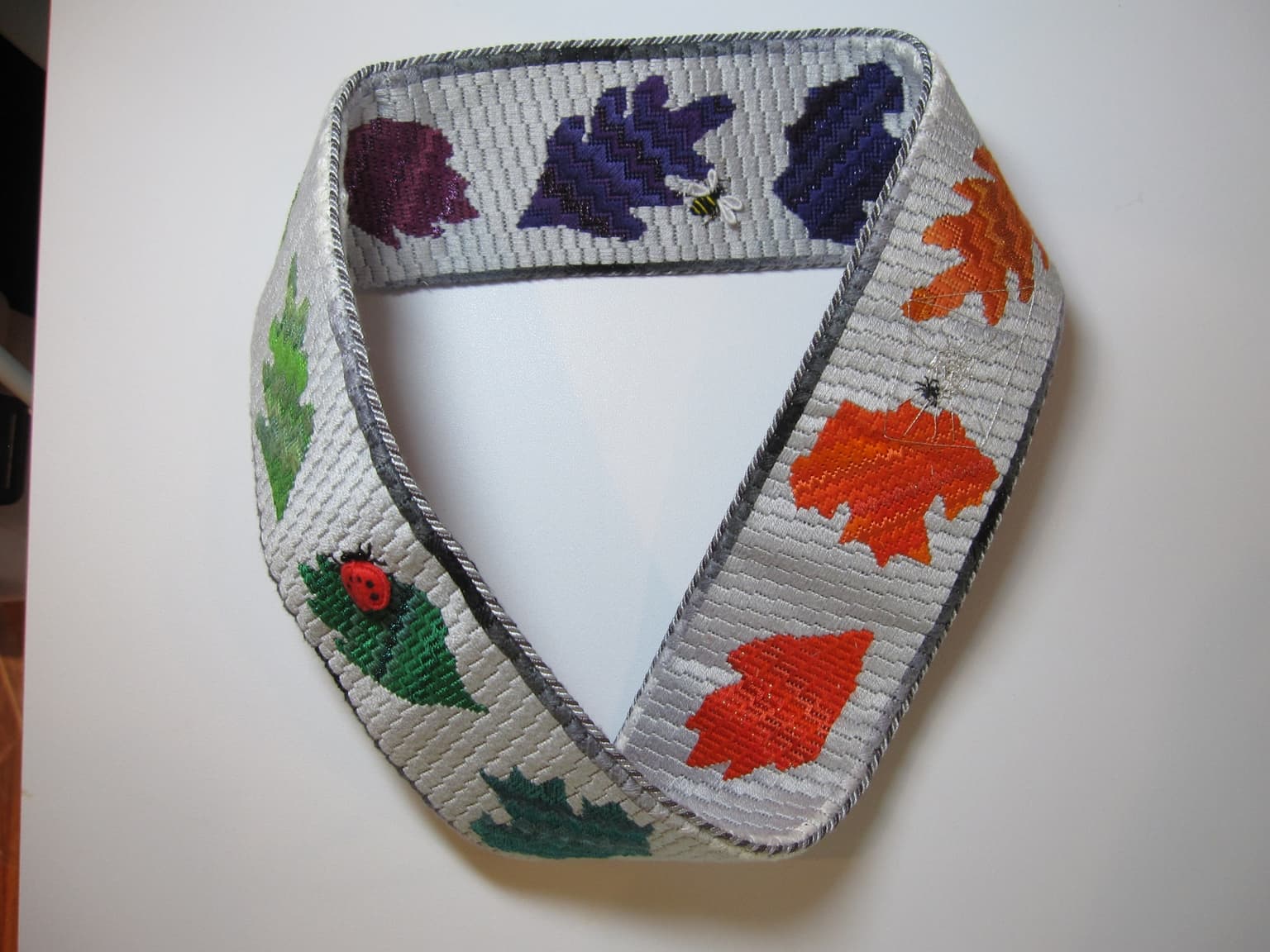2012 Joint Mathematics Meetings
Diane Herrmann
Artists
Diane Herrmann
Senior Lecturer in Mathematics
University of Chicago
Chicago, IL
Statement
“Color Wheel with Twist” is more than just a stitched version of the artist’s color wheel, and is also more than the mathematician’s non-orientable manifold. The colored leaves flow all around the band in their natural order on the color wheel; yet this mysterious shape has only one side. I wanted to capture both color theory and geometry in this piece. I enjoy combining my interests in mathematics and needlework, and had read about quilted Mobius bands in the book, “Making Mathematics with Needlework. ” For a fabric artist, the fact that a Mobius band has just one side is its most important property. If you look carefully at the piece and let your eyes follow the pattern of leaves, your eye will eventually end up back where you started looking, without ever crossing an edge, or looking for the reverse side of the band. The leaves are stitched in colors from red and orange, through yellow and green, then blue and violet, before returning to red. I stitched three leaves within each primary and secondary color “family”; the central leaf of the family is in the pure color hue, and its adjacent leaves are in adjacent color wheel colors. The green (G) leaf, for example, has a green-yellow-green (GYG) leaf and a green-blue-green (GBG) leaf for neighbors. Blue and yellow are the primary colors closest to green on the color wheel. So where the Blue and Green leaf families meet on the band, there is a Blue Green Blue (BGB) leaf next to the GBG one, and a Yellow Green Yellow (YGY) leaf is next to the GYG one. The pattern is similar for all six of the primary and secondary color families. Each of the three leaves in a color family has a different shape with a different diagonal stitch pattern. I selected a variety of threads for each leaf, and included silks, metallics, pearl cotton, and other specialty threads to show subtle color variation within a chosen color. On the central leaf in a color family, I added a “bug” in the complementary color. For example, the green leaf sports a red ladybug, and the red leaf carries a green caterpillar. The bugs are done in various stumpwork techniques (wire elements, canvas appliqué), or with beads. The finished band naturally falls into a kind of triangular shape as it sits on a surface. You can manipulate the shape so that the primary color families are visible at the same time: red leaves with a green caterpillar, yellow leaves with some blue-black ants, and blue leaves with an orange butterfly. If you turn the band over, you will instead see the secondary colors: orange leaves with purple spider, violet leaves with a yellow bee, and green leaves with a ladybug. In fact, the complementary color leaves are back-to-back on the stitched band, and the leaf shapes for the complementary colors are the same. The background is a quieter bargello pattern in neutral gray floss, with a border of alternating Scotch stitches displaying a grey scale. Along the edge for each 3-leaf color family, the grey scale proceeds from white to black and back to white. There are six of these grey scale patterns in the whole band. The band was stitched on a single 60-inch long piece of 18-count white mono canvas. To assemble the band, you put four half-twists into the canvas and seam the short ends. You then manipulate the canvas into a double-thickness Mobius band, with the right side facing out. The long edge (there’s only one!) is then seamed and finished with twisted cord. I designed this piece as one of the requirements in the teacher certification program of the National Academy of Needlearts.
Artworks

Color Wheel with a Twist
12 inches diameter
needlepoint canvas
2011